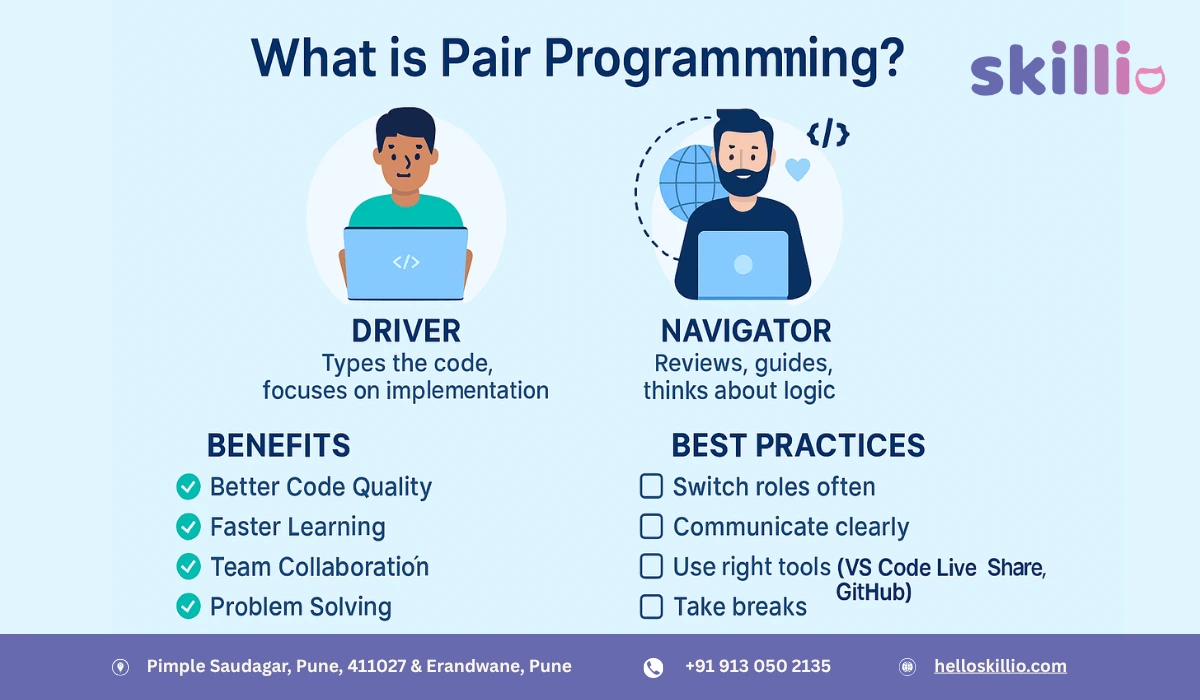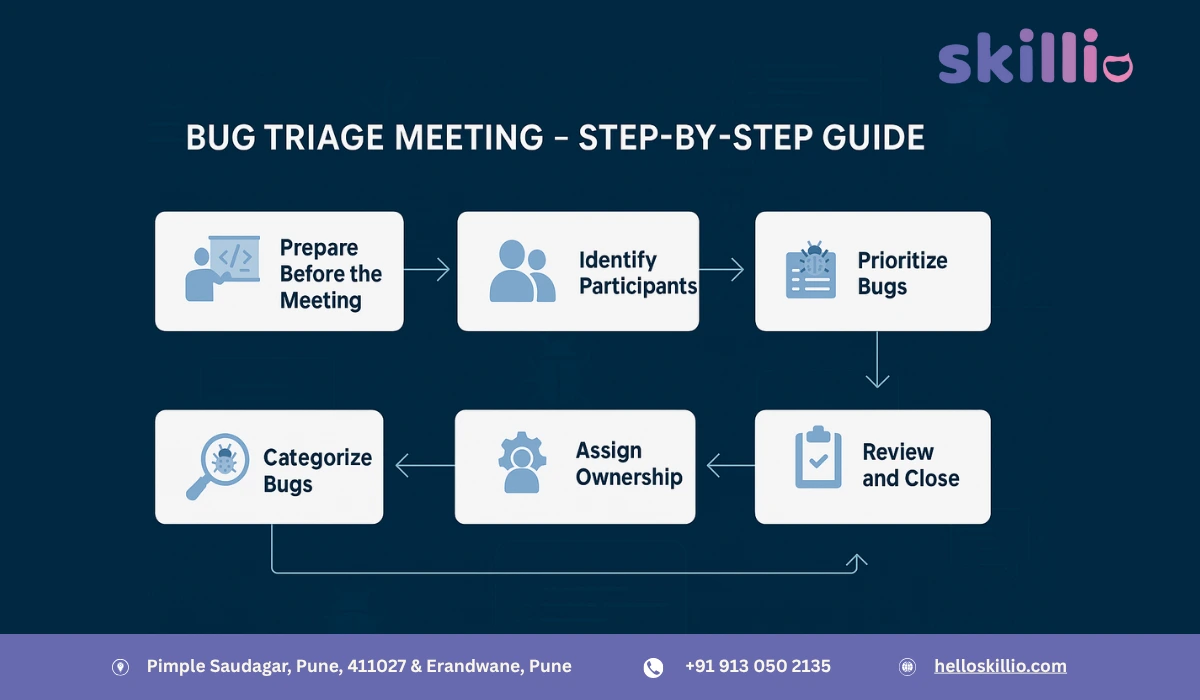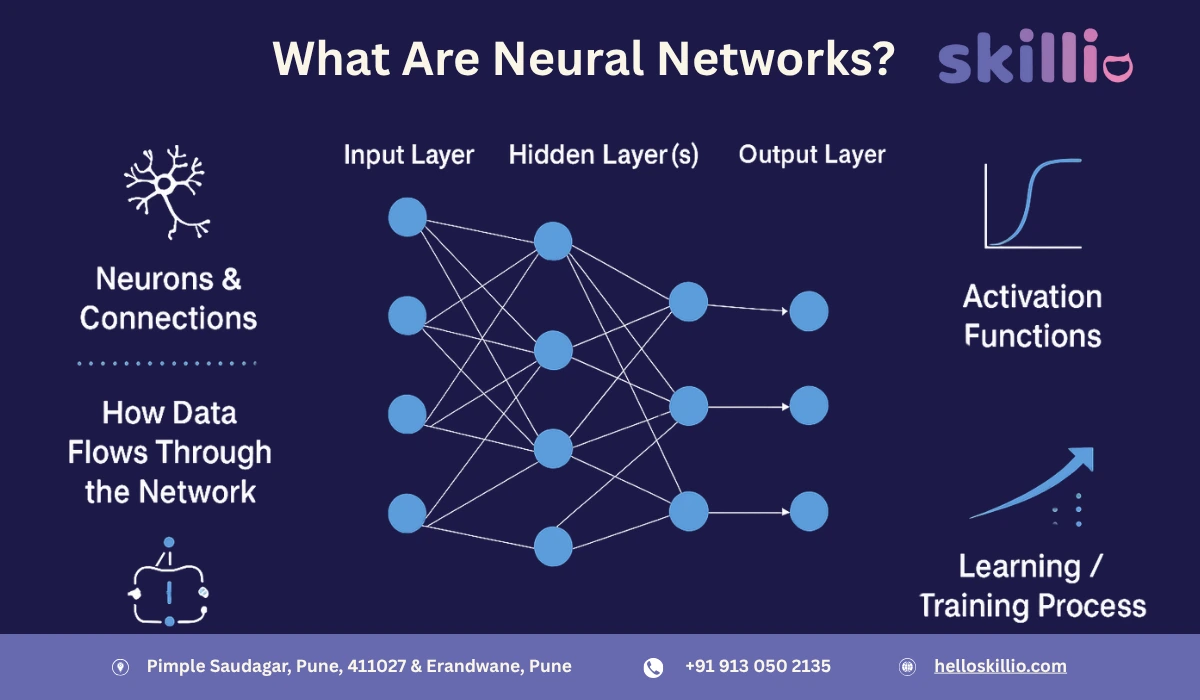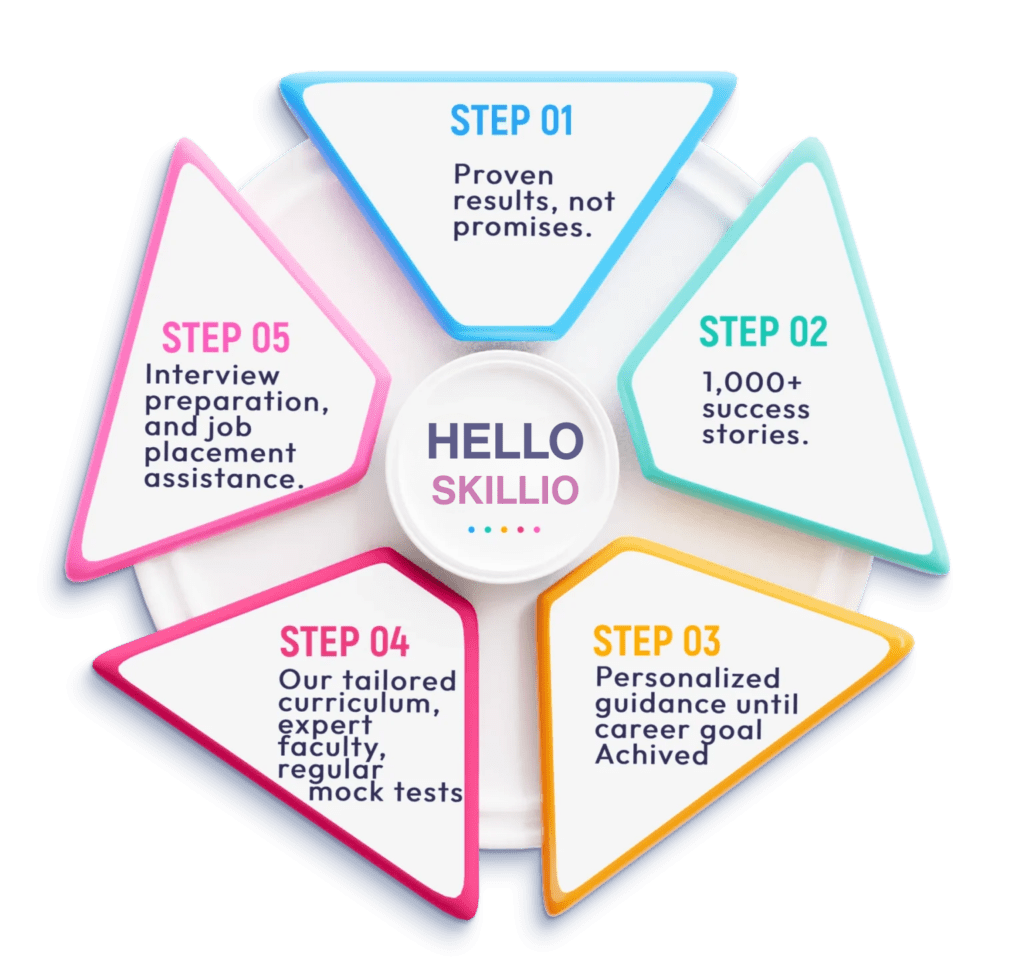In today’s fast-paced software industry, technical skills alone are not enough. Collaboration, communication, and teamwork play a major role in building high-quality applications. One of the most effective techniques that combines coding and collaboration is Pair Programming.
Pair Programming is widely practiced in Agile and Extreme Programming (XP) methodologies. It helps developers write cleaner code, share knowledge, and solve problems more efficiently. If you are a student or aspiring developer enrolled in a Full Stack Developer Course in Pune, understanding pair programming will give you an edge in both learning and your career.
In this blog, we’ll break down what pair programming is, why it matters, its benefits, challenges, best practices, and how beginners can use it to improve their skills.
What is Pair Programming?
Pair Programming is a software development practice where two developers work together on the same task. Instead of working individually, they sit side by side (or connect remotely) and write code as a team.
There are two main roles in pair programming:
- Driver: The person who types the code, focusing on syntax, implementation, and immediate problems.
- Navigator: The person who observes, reviews, and thinks ahead—spotting errors, suggesting improvements, and ensuring the logic aligns with the overall project.
The key to success in pair programming is that both roles are regularly switched. This ensures that both programmers stay engaged and contribute equally.
Why Pair Programming Matters
In the real world, most software projects are built by teams, not individuals. Pair Programming emphasizes the power of collaboration, making it an essential practice in professional environments.
- For students, it’s a great way to learn faster and gain confidence in coding.
- For professionals, it enhances productivity and ensures higher code quality.
- For those in a Full Stack Developer Course in Pune, pair programming is a practical way to apply classroom knowledge to real projects while learning from peers.
Benefits of Pair Programming
Pair programming might sound simple, but the outcomes are powerful. Here are some of the biggest benefits:
1. Improved Code Quality
Two minds are better than one. With one person writing and another reviewing, mistakes are caught early. This leads to cleaner, bug-free, and more maintainable code.
2. Faster Learning & Knowledge Sharing
Beginners can learn from more experienced developers, while peers can exchange ideas and coding techniques. This knowledge transfer is especially valuable for students starting their careers.
3. Stronger Team Collaboration
Pair programming builds communication and trust. Developers learn how to discuss ideas, handle feedback, and solve problems together—skills that are just as important as technical knowledge.
4. Better Problem Solving
When two people brainstorm together, they come up with more creative solutions. Pair programming often helps break down complex problems into simpler steps.
5. Faster Onboarding for New Developers
New hires or students entering internships can quickly get up to speed by pairing with experienced team members.
Challenges of Pair Programming
While the benefits are huge, pair programming isn’t always easy. Here are some common challenges:
- Communication Gaps: If developers don’t communicate well, pair programming can become frustrating.
- Unequal Contribution: Sometimes, one person may dominate while the other stays passive.
- Fatigue: Pair programming requires continuous focus, which can be tiring without breaks.
- Personality Clashes: If two developers don’t get along, pairing can become less effective.
- Time Concerns: Some believe pairing takes more time, though it often saves time in the long run by reducing bugs.
Best Practices for Pair Programming
To make pair programming more effective, follow these proven best practices:
- Switch Roles Regularly – Alternate between Driver and Navigator every 30–60 minutes.
- Use the Right Tools – For remote pair programming, use tools like Visual Studio Code Live Share, GitHub Codespaces, or Zoom.
- Set Clear Goals – Define what you want to achieve in each session.
- Communicate Effectively – Respect each other’s opinions, explain your thought process, and stay open to feedback.
- Take Breaks – Short breaks keep energy and focus levels high.
- Match Skill Levels Thoughtfully – Pair beginners with experienced developers to maximize learning.
Pair Programming in Agile & Workplaces
Pair Programming is a core practice in Agile and Extreme Programming (XP). Companies like Microsoft, Facebook, and ThoughtWorks often use it in real-world projects.
- In Agile teams, it ensures continuous integration, quick feedback, and higher productivity.
- In remote environments, pair programming helps distributed teams collaborate more effectively.
- Many startups also use pair programming as a training tool for freshers to adapt quickly.
Pair Programming for Students & Beginners
For students, pair programming can be a game-changer. Here’s why:
- It helps build confidence when writing code in real-time.
- Students learn teamwork, communication, and debugging skills.
- It speeds up learning by combining theory and practical coding.
- In a Full Stack Developer Class in Pune, pair programming can help students apply concepts like front-end, back-end, and database development in real projects.
Pair Programming vs Solo Programming
Here’s a quick comparison to understand when to use pair programming and when solo coding might be better:
| Aspect | Pair Programming | Solo Programming |
| Code Quality | Higher (real-time review) | Depends on individual skill |
| Learning | Faster (knowledge sharing) | Slower, self-paced |
| Speed | May feel slower initially | Faster short-term |
| Teamwork Skills | Strong collaboration, communication | Limited teamwork exposure |
| Best For | Complex problems, training, Agile teams | Quick tasks, personal study |
Both approaches have their place, but pair programming is especially valuable for beginners and team projects.
Conclusion
Pair Programming is more than just two people coding together—it’s a practice that builds stronger teams, produces cleaner code, and accelerates learning. While it comes with challenges, its benefits in knowledge sharing, collaboration, and quality make it a must-try for both students and professionals.
If you are enrolled in a Full Stack Developer Course in Pune, practicing pair programming with your peers will not only help you grasp coding concepts faster but also prepare you for real-world teamwork in IT companies.
So the next time you sit down to code, don’t go solo—grab a partner, try pair programming, and experience the difference yourself.
Read Here: What Is Full Stack Development? A Complete Beginner’s Guide






